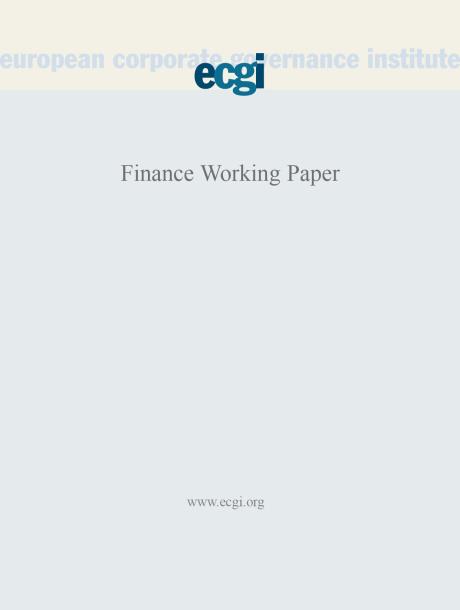
Can Corporate Governance Reforms Increase Firms' Market Values: Evidence from India
Abstract
A central problem in conducting an event study of the valuation effects of corporate governance reforms is that most reforms affect all firms in a country. Share price changes may reflect the reforms, but could also reflect other information. We address this identification issue by studying India's adoption of major governance reforms (Clause 49). Clause 49 requires, among other things, audit committees, a minimum number of independent directors, and CEO/CFO certification of financial statements and internal controls. The reforms were sponsored by the Confederation of Indian Industry (an organization of large Indian public firms), applied initially to larger firms, and reached smaller public firms only after a several-year lag. The difference in effective dates offers a natural experiment: Large firms are the treatment group for the reforms. Small firms provide a control group for other news affecting India generally. The May 1999 announcement by Indian securities regulators of plans to adopt what became Clause 49 is accompanied by a 4% increase in the price of large firms over a two-day event window (the announcement date plus the next trading day), relative to smaller public firms; the difference grows to 7% over a five-day event window and 10% over a two-week window. Mid-sized firms had an intermediate reaction.
Faster growing firms gained more than other firms, consistent with firms that need external equity capital benefiting more from governance rules. Cross-listed firms gained more than other firms, suggesting that local regulation can sometimes complement, rather than substitute for, the benefits of cross-listing. The positive reaction of large Indian firms contrasts with the mixed reaction to the Sarbanes-Oxley Act (which is similar to Clause 49 in important respects), suggesting that the value of mandatory governance rules may depend on a country's prior institutional environment.











